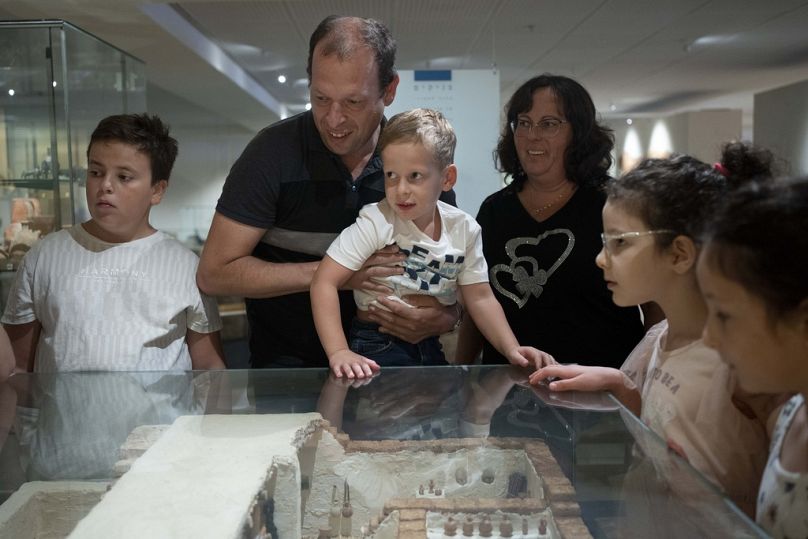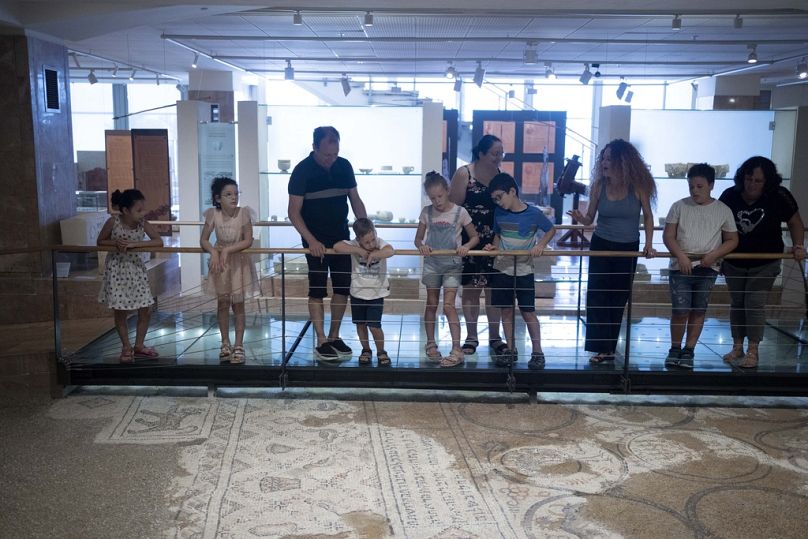The toppled jar could be back on show as soon as this week – thanks to repair techniques that use 3D technology and high-resolution videos.
Four-year-old Ariel Geller made a name for himself last week when he smashed a rare 3,500-year-old jar at the Hecht Museum in Haifa, northern Israel.
All was forgiven on Friday, though, when the Geller family returned to the museum and got to watch as experts worked to restore the jar.
Specialists at the museum – which is associated with Haifa University – are using 3D technology and high-resolution videos to restore the artefact, which could be back on display as soon as this week.
“That’s what’s actually interesting for my older kids, this process of how they’re restoring it, and all the technology they’re using there,” Ariel’s father, Alex Geller, said.
One of the museum’s restoration experts, Roee Shafir, said the repairs would – thankfully – be fairly simple, as the pieces were from a single, complete jar. Archaeologists often face the rather more complicated task of sifting through piles of shards from numerous artefacts and attempting to piece them together.
The jar was one of many historic objects exhibited without protective glass, part of the Hecht Museum’s vision of letting visitors explore history without barriers, according to museum director Inbar Rivlin.
Despite the accident, Shafir, who was carefully reassembling the jar, still believes firmly in this policy. He thinks that artefacts should remain accessible to the public, despite the risk of accidents, because touching an artefact can inspire a deeper interest in history and archaeology.
“I like that people touch. Don’t break, but to touch things, it’s important,” he said.
Likely used to hold wine or oil, the toppled Bronze Age jar dates back to between 2200 and 1500 BC and has been on display at the Hecht Museum for 35 years. It was one of the only containers of its size and from that period still complete when it was discovered.
Not only did he get to witness the jar’s painstaking restoration – Ariel also gifted the museum a clay vase of his very own.













